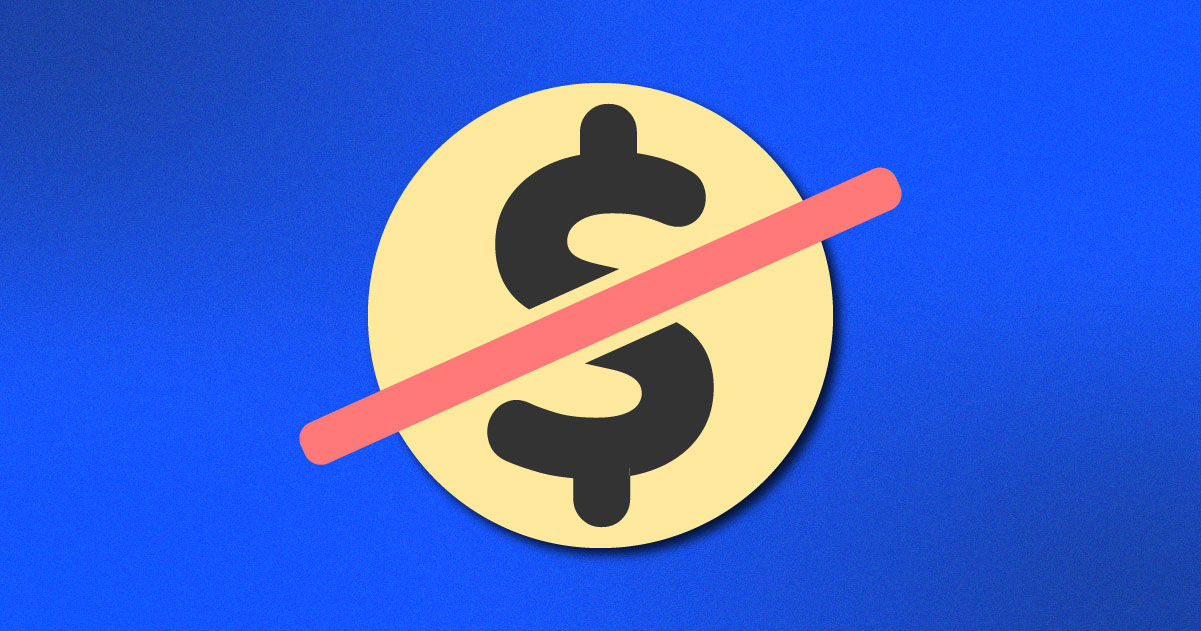“How much are we spending on that?”
You’re probably hearing that a lot these days. As organizations look to trim budgets across every facet of their business, cloud application (SaaS) spending is under the spotlight.
The problem? SaaS spend is inherently difficult to track and control. Apps are easy to adopt, so anyone can and will subscribe to their choice of SaaS applications. That scatters cost across various teams and individuals. It also makes spend insights opaque and cost allocation hard to follow.
Like an unsupervised bowl of Halloween candy, knowing who took what is nearly impossible.
So instead of guesstimating, organizations need to get smart on SaaS spend. That starts with developing a SaaS Spend Management strategy—and using the tools that support it.
5 Steps for Smart SaaS Spend Management:
Step 1: Begin With Application Discovery and Mapping
Step 2: Use Your SSOT To Better Understand Your SaaS Stack
Step 5: Eliminate Surprise Renewals & Prepare for the Future
What is SaaS Spend Management?
SaaS Spend Management is exactly what it sounds like: the methods to manage cloud application spending.
Cutting costs isn’t the purpose of SaaS Spend Management—it’s the result. Rather, your intent is to optimize your SaaS stack. As a natural outcome of that optimization, you’ll improve effectiveness, reduce wasteful costs, and increase your application’s collective ROI. That starts with discovering both the sanctioned and unsanctioned parts of your SaaS stack.
Most organizations lack the visibility to take action, optimize, and ensure that waste is eradicated. Driving ROI with SaaS applications starts with seeing every single one.
Step 1: Begin With Application Discovery and Mapping
Accurate discovery is the foundation of successful SaaS Spend Management.
If you don’t reveal every cloud application (including Shadow IT) your SaaS spend insights won’t be accurate, reliable, or useful.
And while sanctioned applications are often easy to locate, discovering unsanctioned applications is far from straightforward.
That’s where a SaaS Management Platform (SMP) simplifies the process. A SaaS Management Platform automatically discovers every application in your SaaS stack and makes it easy to manage and act on them.
The Torii Platform accomplishes this by gathering data from various sources, including finance apps such as NetSuite, SSOs such as Okta, and HR systems such as Bamboo to create a centralized view of every application. It then leverages its unique AI Discovery and Mapping algorithm to automatically cross-reference all the data pulled from those sources to confirm that it is accurate. Torii can even leverage an optional browser extension to surface all business applications that employees sign up for using their corporate email addresses.
The Torii Platform also utilizes intelligent filtering to make sure that all your data is relevant. While it’s important to unearth applications such as project management platforms and design applications, it’s less relevant to discover social media and dating apps. That’s why Torii lists discovered applications in two organized tabs. The Review tab and the Refine tab. The “Review” tab holds all business-critical apps and their data. The “Refine” tab allows Torii users to peer behind Torii’s mapping algorithm and view non-business apps. The Torii user can then map those apps according to their company’s policy.
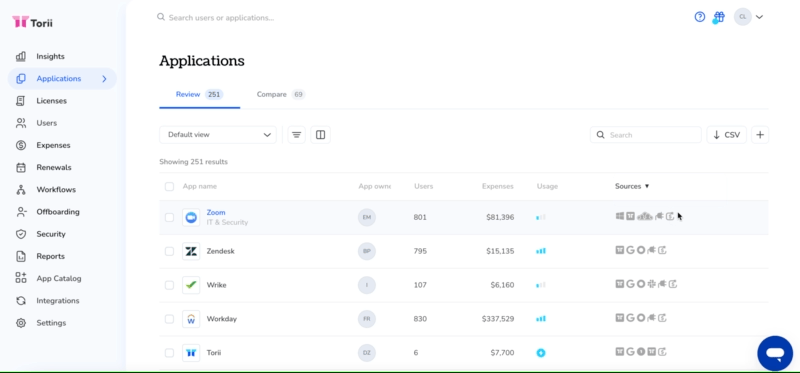
Step 2: Use Your SSOT To Better Understand Your SaaS Stack
Once you’ve unearthed and identified all the applications in your SaaS stack, the next step involves connecting the (financial) dots.
Your information is centralized in an SSOT (Single Source Of Truth), now you need to understand how cost travels through your organization. With Torii as the heart, your organization’s vascular system is on full display.
Torii pulls from various expense applications such as Expensify and finance applications such as Netsuite to provide a full view of what each app is costing you per license, contract, and department. That “per” part is important. It surfaces the pathways your investments are taking and helps you connect them to value.
While it’s helpful to know the total you’re spending on a specific application, not all apps make their per-employee ROI immediately clear. Understanding cost allocation enables you to apply a critical lens to how much is spent on an application for each department, and each of their respective team members, to better clarify value.
Suddenly SaaS spend is tangible and clear— getting you closer to understanding what value each app is returning. This single source of (financial) truth becomes integral when you begin examining usage in the following steps.
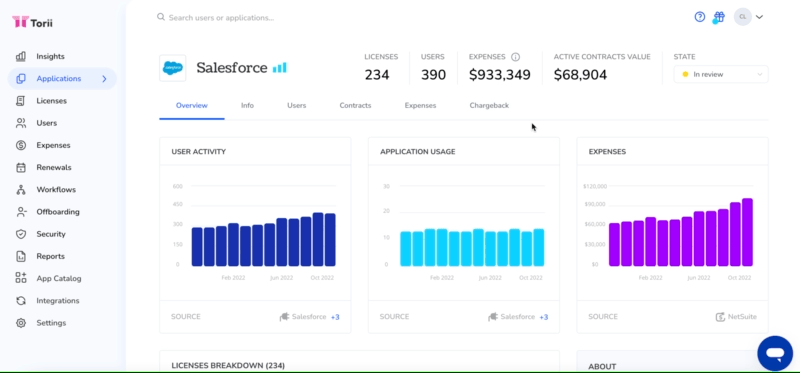
Step 3: Start With Easy Wins
After Torii has automatically identified and mapped all applications at your company, it’s easy to gain fast cost-savings wins.
Easy wins can represent a proof point for your spend management process and motivate your team to take further actions.
39% of our customers report Torii paying for itself within the first 6 months thanks to wins such as these:
Unused Applications
Unused applications are the first and simplest way to start cutting wasted SaaS spend at the root.
The Torii Platform provides real-time usage data for every application in your SaaS stack. Doing so makes identifying abandoned, unused or severely under-utilized applications easy—including those trending toward the end of their life cycle.
Those applications accumulate costs as quickly as they collect dust. That makes them a prime candidate for retirement. Suddenly, Procurement’s job is much easier, as they’re armed with decisive data to shed deadweight prior to a surprise renewal arising.
Even more actionable is the level of automation the Torii Platform provides. Looking to cancel an application if unused after a certain amount of time? Automate it (but more on that later).
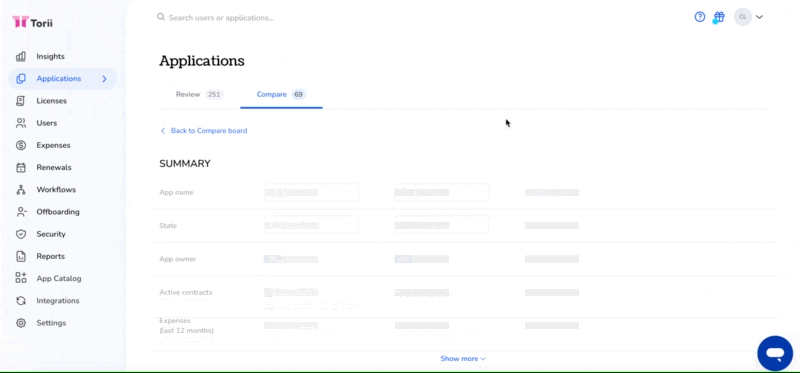
Unused Licenses
License management is critical to prevent SaaS waste. From incomplete offboarding to apps that fall out of favor—those associated licenses weigh down your budget.
With the Torii Platform, we pull that deadweight to the surface—clearly showing you how many licenses are active or inactive in usage, or completely unassigned. With these insights, Torii helps you understand current and future license needs, revealing cost-saving opportunities. From there, you can drill deeper into real-time data—including when licenses were last utilized, how much they cost your organization, and more.
Has an employee not used an application for 60 days? With Torii’s Workflows, you can send them an automated email or Slack notification at the 60-day point, asking if they still require the license. You can even make clear how much they’d save your organization if they allow you to reharvest that license instead of purchasing a new one – or eliminate the license altogether.
This functionality makes reclaiming inactive licenses collaborative and helps employees understand how abandonment leads to waste (and risk).
Did you buy too many licenses? Torii gives you the full story of license utilization and cost-saving opportunities. From the “Licenses,” view how many license seats are unassigned, idle, and active. With these insights, you can quickly rightsize your subscriptions.
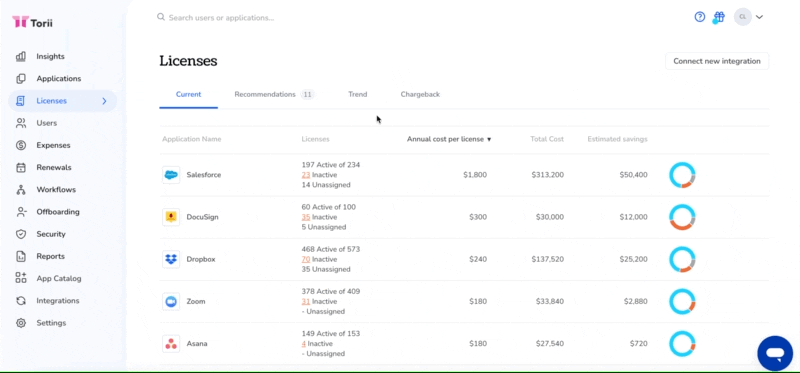
License Tier Evaluation
Some applications have a variety of license tiers based on their functionality. Zoom, for example, has a free Basic and a paid Pro license based on the amount of time allowed for meetings. The added cost of going from free to paid can accumulate quickly.
The Torii Platform makes targeting opportunities for license tier optimization even easier by providing intelligent and automatic recommendations regarding employees that can have their license tiers scaled down. Is an employee rarely hosting meetings longer than 30 minutes? The Torii Platform will recommend their license scale back to Zoom Basic—saving money.
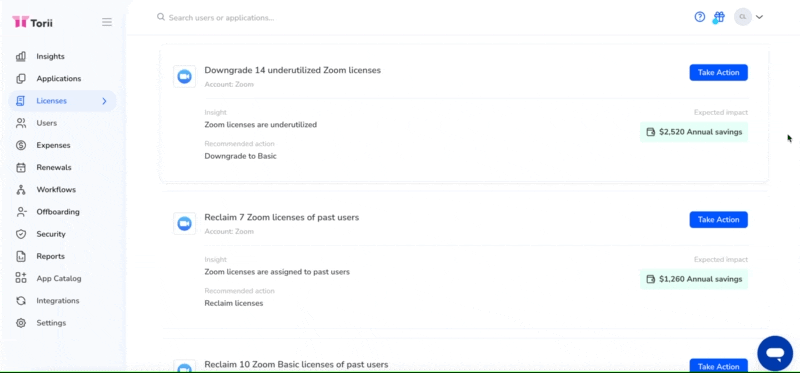
Step 4: Optimize Operations
Wasted spend is directly tied to wasted time.
Technology should optimize the way you work, not weigh it down. That includes the technology used to manage your technology.
The cost of software goes beyond the number on the contract. If you’re wasting time operating, chasing, or provisioning an application—it’s costing you more than that initial price tag. That means even free applications are still costing you.
That makes automation key to savings. Automation can save your organization time in operational efficiency. But it also allows you to automate cost-saving tasks. Essentially, you will save time on saving money—compounding the return on your spend management efforts.
The beauty of the Torii Platform is that you can easily automate any action in your SaaS management process.
Do you want to deprovision employees’ application access on their last day? Automate it. Do you want to ping employees who aren’t utilizing their licenses to prompt reharvesting? Automate it. Do you want to create a complex process that involves pinging relevant stakeholders at specific intervals in an application’s lifecycle, including near renewal or when usage drops or spikes? Automate it.
The power is in your hands. You’ll have enterprise-level automation at your fingertips (without enterprise-level costs), enabling you to leverage it however you’d prefer. It’s all made possible through our easy-to-use, no-code Workflow creator.
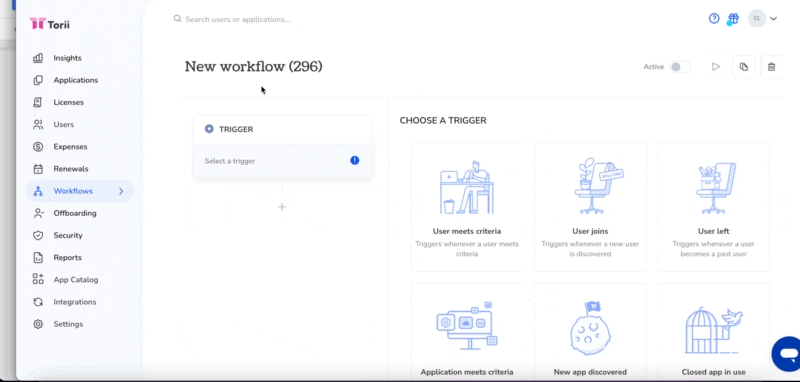
Step 5: Eliminate Surprise Renewals & Prepare For The Future
After you have a better handle on your current SaaS stack, it’s time to look to the future.
The information in hand can quickly change the dynamic of your role. For IT leaders, that means an improved ability to align SaaS costs with company objectives (most likely a directive from finance). For Procurement leaders, that means having the information required to negotiate more favorable terms, enable continuous spend management, and shed bloat from your budget as soon as you see it.
That starts with eliminating the possibility of surprise renewals. Every renewal is a test of preparedness. Why waste money on additional licenses when you can reclaim unused ones? Or even better, reduce license quantities to reduce the cost of that application.
The Torii Platform makes the process transparent by automatically building a dynamic renewal calendar based on the information it sources across applications and contracts.
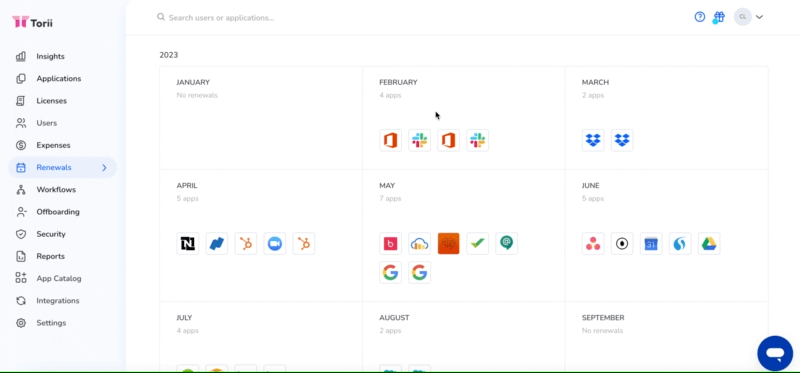
This makes it easy to visualize relevant information when a renewal is coming and receive automatic reminders before the time arrives. Suddenly, it becomes a lot easier to negotiate or forgo renewals, compare applications, and more.
But that’s not all, Torii makes the process of uploading contract data effortless. Torii’s AI contract ingestion uploads your SaaS contracts, and identifies critical data, including hidden auto-renewal clauses and their last cancellation date. This way, IT and Procurement teams can identify critical info and plan in advance of renewals with the click of a button.
By bringing insights on value to the forefront of every renewal discussion, both IT and procurement can change the dynamic of contract negotiations.
From there, it’s easy to start developing an application rationalization process that systematizes how your organization evaluates applications. Features such as Torii’s side-by-side app comparison make that process that much easier.
The process of application rationalization and the actions that it informs (such as the easy-wins discussed prior) are a continuous process. Apps will continuously accumulate from employees adding them—continuously acting on optimization will keep waste from doing the same.
Conclusion
Now is the time to take smart steps toward continuous SaaS Spend Management.
Inflation and financial instability are beginning to shape the decisions of organizations of every size and type.
When you consider the possible savings by getting your house in order, it’s an easy motivator. But the process isn’t a one-time action. It involves IT leaders building the foundation of SaaS Spend Management, leveraging the proper tools, and then utilizing them over time to upkeep an optimized SaaS stack.
If you’re ready to start your journey toward better SaaS Spend Management, we’ve written a guide on how to get started and find your “True North” in the process.
